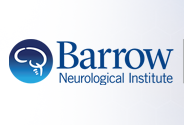Left distal radial access in patients with arteria lusoria: insights for cerebral angiography and interventions
Document Type
Article
Abstract
BACKGROUND: The transradial approach (TRA) is frequently used for neurointerventional procedures as it is safer, improves patient comfort, and decreases costs and procedural time in comparison with the transfemoral approach (TFA). Patients with arteria lusoria, or an aberrant right subclavian artery (ARSA), provide a unique challenge for cerebral angiography and interventions when using the TRA. OBJECTIVE: To examine the hypothesis that the extreme angulation encountered while accessing the great vessels from the right TRA could be overcome by reversing the approach to the left distal TRA (dTRA). METHODS: A prospectively maintained database of transradial neurointerventional cases since 2018 was searched. Six cases from 850 were identified, in which the left dTRA was used. Three cases were for patients with an ARSA. For the three cases of interest, patient history, pathology, imaging, and access techniques were reviewed. RESULTS: Two diagnostic cerebral angiography cases and one intervention were successfully performed through a left dTRA. CONCLUSIONS: Proper positioning of the left wrist and familiarity with forming the Simmons catheter can overcome this anatomical challenge. This technique and results further demonstrate that the left distal radial artery is a feasible access site for catheterization of bilateral carotid, left vertebral, and right subclavian arteries for patients with an ARSA.
Medical Subject Headings
Brachiocephalic Trunk (diagnostic imaging); Cardiovascular Abnormalities (diagnostic imaging, surgery); Cerebral Angiography (methods); Female; Humans; Male; Middle Aged; Prospective Studies; Radial Artery (diagnostic imaging, surgery); Subclavian Artery (abnormalities, diagnostic imaging, surgery)
Publication Date
12-1-2020
Publication Title
Journal of neurointerventional surgery
E-ISSN
1759-8486
Volume
12
Issue
12
First Page
1231
Last Page
1234
PubMed ID
32546634
Digital Object Identifier (DOI)
10.1136/neurintsurg-2020-016199
Recommended Citation
Majmundar, Neil; Patel, Pratit; Gadhiya, Arjun; Patel, Nitesh Vijay; Gupta, Gaurav; Agarwalla, Pankaj K.; and Khandelwal, Priyank, "Left distal radial access in patients with arteria lusoria: insights for cerebral angiography and interventions" (2020). Neurosurgery. 2209.
https://scholar.barrowneuro.org/neurosurgery/2209


